Species
{{start}}
{{end}}
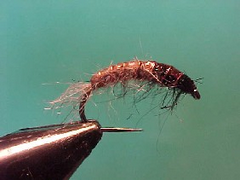
{{+1}}Czech nymphs{{-1}}
{{start}}
The uncased caddis have quite a few similarities. They often adopt a curved fetal position and when they are free swimming they are more elongated still with a curved back but with a lifted head. The have short tail like filaments, have bodies of around seven or eight segments that may have abdominal gills at each segment, have darker heads with two or three segments and have 3 or more sets of legs below the head or toward the front of the grub.{{end}}
{{+1}}Fly fishing options – Central Victoria{{-1}}
{{start}}
This is brief summary of trout a ctivity in the non alpine areas of Victoria.{{end}}
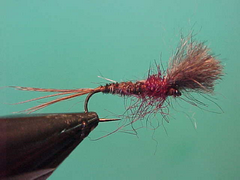
{{+1}}Possum emerger{{-1}}
{{start}}
There are plenty of possum emergers out there. Generally they have a nymph like body and then either a brush type wing or a bud type wing. I like brush type wing emergers better as dense wing traps more air and consequently they float better. The little thorax of seals fur is also good because it sheds water with a flick of the fly.{{end}}
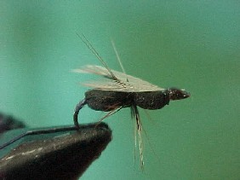
{{+1}}Foam flying ant / termite{{-1}}
{{start}}
The biggest problem with many termite and ant flies is that because you only use and only need two wraps of hackle to represent the legs they unfortunately have a tendency to sink. This foam termite whilst still looking realistic overcomes that problem.{{end}}
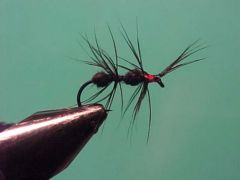
{{+1}}Ant – black{{-1}}
{{start}}
If it's a hot day, a warm balmy night, if water is rising over previously dry ground or almost any time for that matter you can get huge hatches of ants. They vary in colour but the dominant hatches are of black meat ants. When the fish are feeding on ants they just sup the insects down one by one often at the exclusion of all other food sources. The best technique for ant feeders is to grease your leader except for the last 60 cm or so and to cover individual fish or place your fly amongst the naturals in the path of feeding fish.{{end}}
{{+1}}Fly fishing options – Central Tasmania{{-1}}
{{start}}
The cooler climes and the shear number of accessible lakes and rivers make Tasmania an iconic fly fishing destination. And if you going to be in Tasmania to fly fish then your probably going to finish up in the central highlands fishing world renowned water like Little Pine, Arthurs Lake, Penstock, Woods Lake and the list goes on.{{end}}
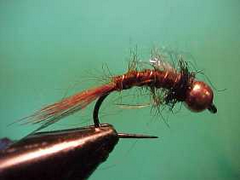
{{+1}}Bead head nymphs{{-1}}
{{start}}
I have listed this fly box first because its undoubtedly the most important of my river fly fishing boxes. I am a firm believer that when fishing rivers you have to get down to where the fish are holding and also that flies particularly in faster running water should include "hot spots". These flies satisfy both these requirements for me and consequently have a place in my Bead head fly box.{{end}}
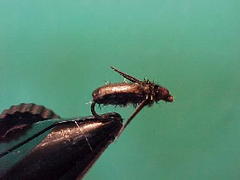
{{+1}}Aquatic insects – fresh water{{-1}}
{{start}}
Aquatic insects that are of interest to fly fishers come from two separate orders. The first are the aquatic bugs of the hemipterus order include back swimmers corixia and the second the aquatic beetles of the order coleopteran.{{end}}
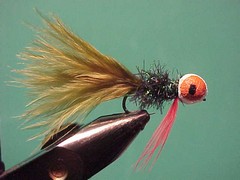
{{+1}}Lakes – loch style … all pumped up / booby pumping{{-1}}
{{start}}
There is nothing new about "Booby Pumping". English fly fishers have been doing it for years and for a time it was considered so successful in some impoundments that it was banned. I have been fishing boobies for quite a few years and booby pumping has even won a couple of competitions for me.{{end}}

{{+1}}Prospecting tips for lake trout{{-1}}
{{start}}
Lakes and impoundment's are not just big volumes of homogeneous water denuded of any structure even though at first glance that may be how they seem. Lakes are full of structures, or effected by structures, of one form or another that dramatically influence the available food sources, the temperature of the water and the general comfort zone of the trout.{{end}}













